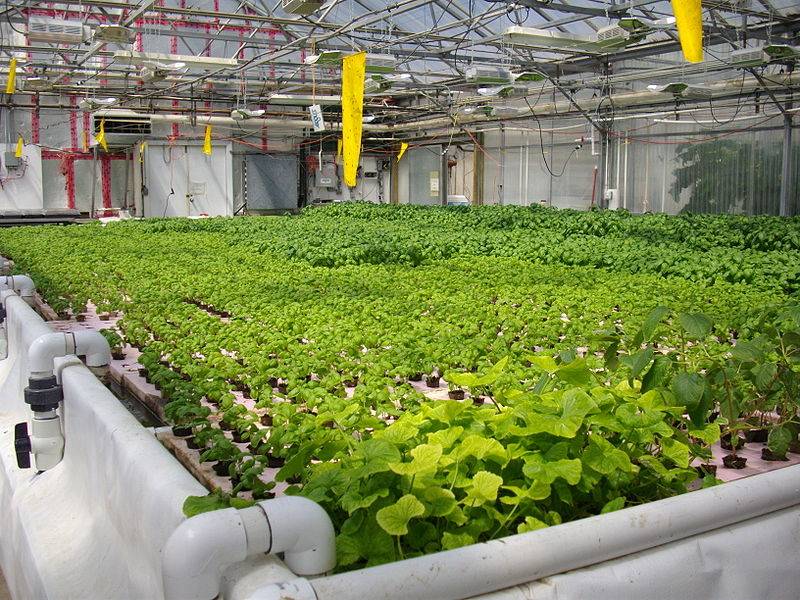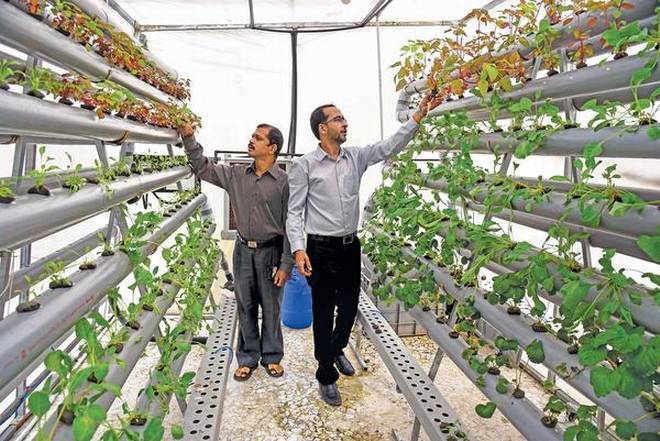
Population wise India is the second largest country in the world hence the government is worried about how to control the increasing population level but at the same time it is a matter of pride that we have largest youth potential in the world. In the present era we have a challenge to create employment opportunity for the job seekers and to provide nutritious diet to the present as well as future generations. Good agriculture production could have been a solution but due to rising population, agricultural land is diminishing. Growing wasteland is also a big problem in farming. In urban areas due to space problem people don’t think about agricultural production but always demand for fresh quality vegetables and protein sources.
For all these problems there is one solution - Aquaponics.

For those who don’t know, Aquaponics is a sustainable method of raising both fish as well as vegetables. Aquaponics is a great indoor farming method, which can be done anywhere. It provides fresh local food that is without any pesticides, herbicides and chemical fertilizers. Other benefits include:
-
It provides two crops in one place at a time and is very helpful in increasing the farmer’s income.
-
It gives more production than traditional farming method.
-
It provides vegetables from hydroponics and fishes from re-circulatory aquaculture system at the same time. We know that vegetables are the good source of vitamins and fish is a good source of protein with high amount of w -3 fatty acids that is helpful in maintaining good health.
-
Easy to operate.
-
It can be implanted in very small space like 10 m2, so the vegetables and fishes can be grown on site of restaurant, hotels, houses, and farms easily.
-
Aquaponics can be a good opportunity for the unemployed; they can start it as a startup business under START UP YOJANA.
HOW IT WORKS:
It combines Hydroponics and Re-circulatory aquaculture system and this is suitable for both as the nutrients requirements is fulfilled by the disposing of nutrient-rich fish waste from aquaculture unit thus there is no need for nutrient media. This fish waste provides a natural nutrient solution for plant growth and this nutrient-rich effluent is used to irrigate a connected hydroponic bed while fertilizing its plant crops at the same time. The filtration of water is done by the hydroponic unit as the plants absorb the nutrients and filter the water through the sand filter so this media based hydroponic system serves as an aerobic bio filter that is generally used in RAS, converting ammonia to nitrate. The ammonia is converted by denitrifying bacteria in the hydroponic grow bed into forms readily up taken by plants for energy and growth. Essentially, the hydroponic bed and its crops serve as a bio-filter for the fish waste water before it is returned, cleaned back into the fish tank. To utilize the nutrients more in amount from the waste water effluent of aquaculture unit, the Aquaponics unit should be dominated by the hydroponics system.
Preferable vegetables and fish species for Aquaponics:
Vegetables:
Lettuce, Basil, Coriander, Spring onion, Fruit vegetables such as tomato, cucumber, Beets, Okra, Blueberries, etc
Fish species
Nile Tilapia (the most preferable fish), Catfish, common carp, Asian Barramundi , Mullet, Perch, Largemouth bass, bester sturgeon, Grass carp, Ornamental fishes.
Potential of Aquaponics Production System (Fish and Vegetable):
The vegetables are produced around double in hydroponic and aquaponics systems as compared to more conventional horticulture system. Some researchers has demonstrated the total production from Fish and vegetable up to 160 kg/m2/yr. so the aquaponics is a great solution for food security and unemployment problem.
Author:
Pawan Kumar Sharma
Dr. J. Stephan Sampath Kumar
Centers for Sustainable Aquaculture, Thanjavur- 614904
Tamil Nadu Dr. J. Jayalalithaa Fisheries University Tamil Nadu.
[email protected]
Mobile- +91-9024974343















